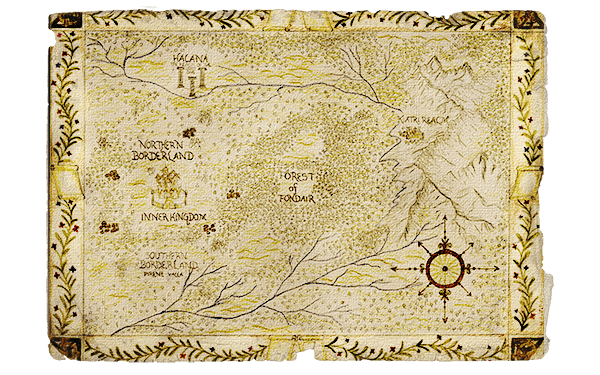Julien Jamar shares secrets of the Fey in the Land of Lashai.
The Fey
Most races and places in The Namarielle came from my imagination. I love dreaming up worlds. It makes me feel in control over one tiny aspect of my life, otherwise controlled by my five small children and my love for tacos. So, this, I control… these tiny black words on a piece of paper, or a digital white space.
Other aspects of the story, however, hold too much historical significance to alter, even if it’s only fantastical history. The Fey fall into this category. My husband loves research. He prints out pages and pages of tales and legends surrounding these mythical creatures. Obviously, their impact even in our real world is substantial. We have an entire subgenre of fantasy named after them; fairy tales are as old as the story-telling itself. Thousands of years telling such tales make the Brothers’ Grimm and Hans Christian Anderson relatively contemporary.
However control-freakish I may get when I sit at my computer and tamper with the laws of nature and genetics, I don’t usually meddle with the laws of the fairy realm. Even in their lore, description varies from writer to writer. Some stories paint the fair folk as miniscule, some as only slightly smaller in stature than men, some have them the same size or larger. My rendering gives them roughly the same height as the mortals whom they either torment or ignore.
My fair folk are also missing wings, but definitely have an ethereal look about them. The Namarielle fairies glow from within. They have oddly colored eyes like pea green, crimson and lavender. Their clothing is frothy and flutters around them as if a breeze is always blowing a little.
More unique characteristics are described in the next book, The Fontre, but I won’t disclose them here just yet. I can’t spoil much. Sorry.
While size and appearance varies in fiction, one thing remains static in their mythology: their inherent love of mischief. I’ve taken this a step further with the Queen of the Fey and made her experimentally mischievous. Dahlia wants to cause the inconvenience, or even outright pain of the mortals she observes, but she can’t, like most fairies remain coldly isolated from their struggle. Having inherited her mother’s curiosity, she longs to know what makes them do the things they do. She wants to capture secrets and use them against their keepers. She seeks darker secrets too, as we will see in upcoming stories and books.
One other fairy power I kept true to their lore, is the strange pull of their food. It is a well-known fact among we fairy documentarians that any mortal who eats the food of the fey can (at the whim of their hosts) be bound in their land for eternity. This bit is carefully preserved in Lashai. Unfortunately for our fellow mortals, the fairies of this realm have the powers to bind their guests whether they eat the food or not, but still… Hollis definitely doesn’t try to tempt fate.
I hope you curl up with a delicious cup of coffee or tea, and dive into Lashai’s version of the Fairy Realm. I hope you won’t wander aimlessly in the Woods of Terryn. Mostly, I hope you will feel the fairies are preserved and presented in this story as they should be. There are things even the pen of a fantasy writer shouldn’t alter. Vampires are not supposed to glitter in sunlight. Werewolves simply must transform in light of the full moon. Fairies should be otherworldly and full of mischief, even the fairies of Lashai.

